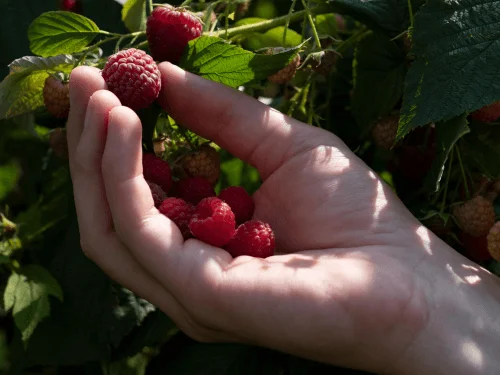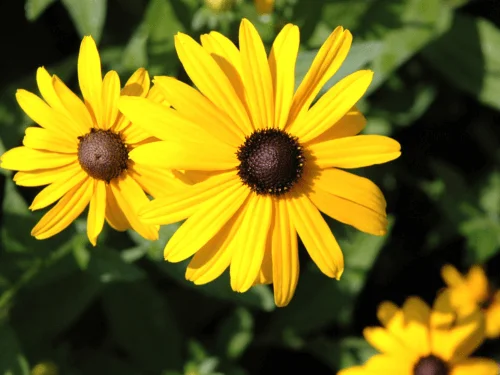Growing Sunflower: How to Plant Sunflowers and Grow Sunflowers Successfully
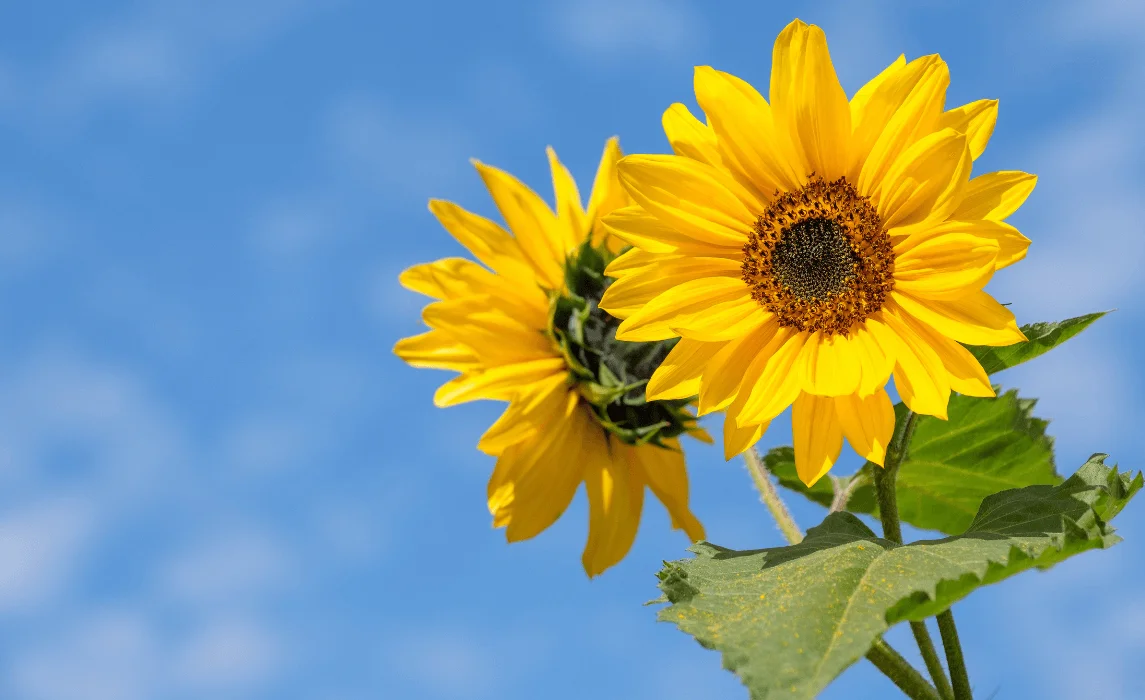
1. What is the best way to grow raspberries?
Raspberries grow best when planted in a sunny garden with well-draining soil. You can start by planting bare-root or potted plants in early spring or late fall. Rows of raspberries should be spaced about 2 to 3 feet apart within a row and 8 feet between rows. Using a trellis or support system helps canes grow upright and promotes healthy berry production.
2. How do I plant raspberries?
When planting raspberries, place the crown of the plant 1 or 2 inches above the ground. For bare-root plants, spread the roots in a hole and cover gently with soil. For potted plants, plant at the same depth as they were in the container. Make sure each bush has space to spread so new shoots and suckers can grow without overcrowding. Raspberries are easy to grow, but giving them proper spacing and sunlight ensures your raspberry patch thrives.
3. When do raspberries grow fruit?
Raspberries are perennials, and the first year canes mostly focus on root and cane growth. Summer raspberries (summer-bearing) produce fruit on two-year-old canes, typically in early summer. Fall-bearing raspberries (everbearing) can produce a crop in the fall of the first year, and another in the following summer from the same primocanes. With proper care, a bush can produce fruit in both summer and fall, giving you fresh raspberries for pies, tarts, or eating straight from the garden.
1. Are black-eyed Susans perennials or annuals?
Rudbeckia hirta, the traditional black-eyed Susan, is a biennial or short-lived perennial that often acts like an annual due to self-seeding. Some cultivars like Rudbeckia fulgida are true perennials that return every year.
2. When do black-eyed Susans bloom?
They typically bloom from early summer to early fall, filling your garden with bright yellow petals and dark black eyes. Regular deadheading encourages continuous flowering throughout the season.
3. How do I plant black-eyed Susan seeds?
Scatter Rudbeckia hirta seeds directly on the soil surface and press them lightly, as they need light to germinate. Keep the soil moist, and seedlings will appear within 7–21 days.
4. Can I grow black-eyed Susans indoors or in containers?
Yes. You can grow black-eyed Susans in containers indoors or outdoors. Use a regular seed starting mix, ensure proper drainage, and place them in a sunny location for maximum blooms.
1. What do yellow flowers symbolize?
Yellow flowers often represent friendship, positivity, and joy. They’re ideal for celebrating success, expressing gratitude, or brightening someone’s day.
2. Do yellow flowers attract pollinators?
Absolutely! Sunflowers, coreopsis, and goldenrod are magnets for bees, butterflies, and other beneficial insects.
3. Can yellow flowers grow in partial shade?
Yes, lilies and calla lilies tolerate partial sunlight, making them great for slightly shaded gardens.
4. How can I extend the bloom time of yellow flowers?
Deadhead spent flower heads, keep soil nutrients balanced, and ensure proper watering to promote continuous blooms.
The sunflower is one of the most iconic garden plants, known for its golden petals and ability to follow the sun throughout the day. If you’ve ever wondered how to grow sunflowers in your backyard or even in containers, the process is simpler than you think. By learning the basics of sunflower planting, from choosing the right soil to giving them enough sunlight, you can enjoy tall, vibrant blooms all season long. Whether your goal is to plant sunflowers for beauty, to attract pollinators, or to harvest seeds, this guide will help you grow sunflowers successfully step by step.
Best Sunflower Types to Grow
There are many sunflower varieties, ranging from compact plants for pots to towering giants for open fields. Some of the best include:
Traditional Giant Sunflower (Helianthus annuus)
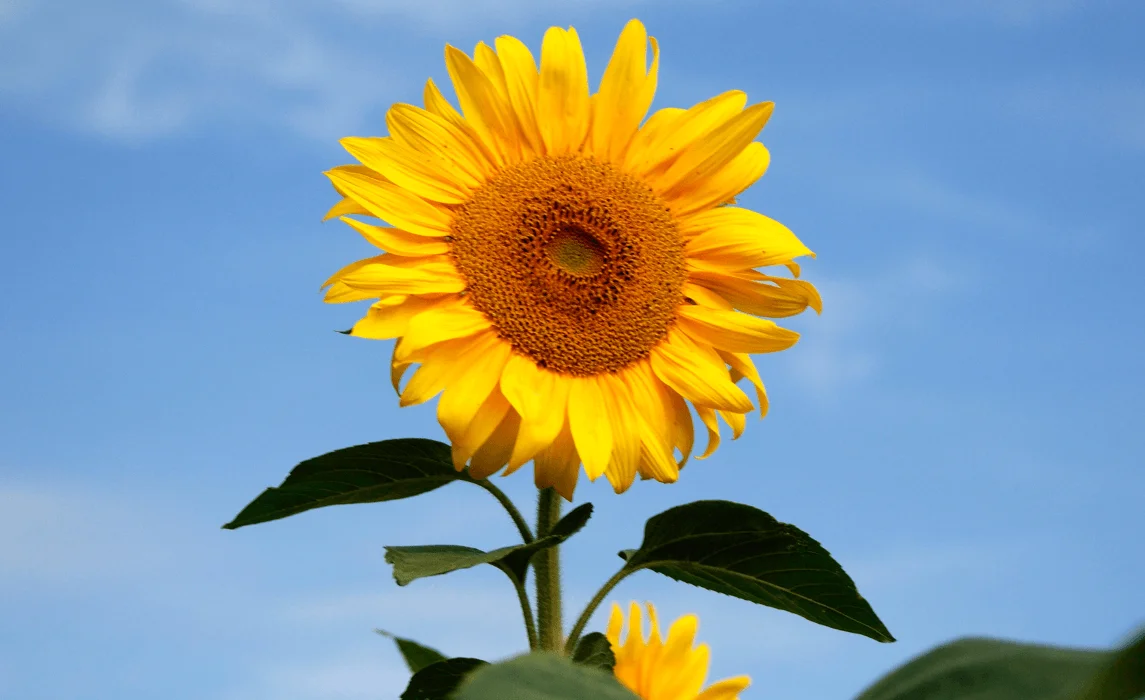
The Traditional Giant Sunflower is the classic variety that can grow 12–15 feet tall with thick stems and massive flower heads up to 24 inches across. Packed with seeds, they’re great for roasting or leaving for birds, and their height makes them a natural privacy screen or striking garden backdrop. They thrive in full sun, rich soil, and need steady watering. Since they’re top-heavy, staking helps protect them from strong winds. If you want the iconic sunflower look with plenty of seeds to harvest, this is the variety to grow.
Dwarf Sunflowers (e.g., Sunspot, Teddy Bear)
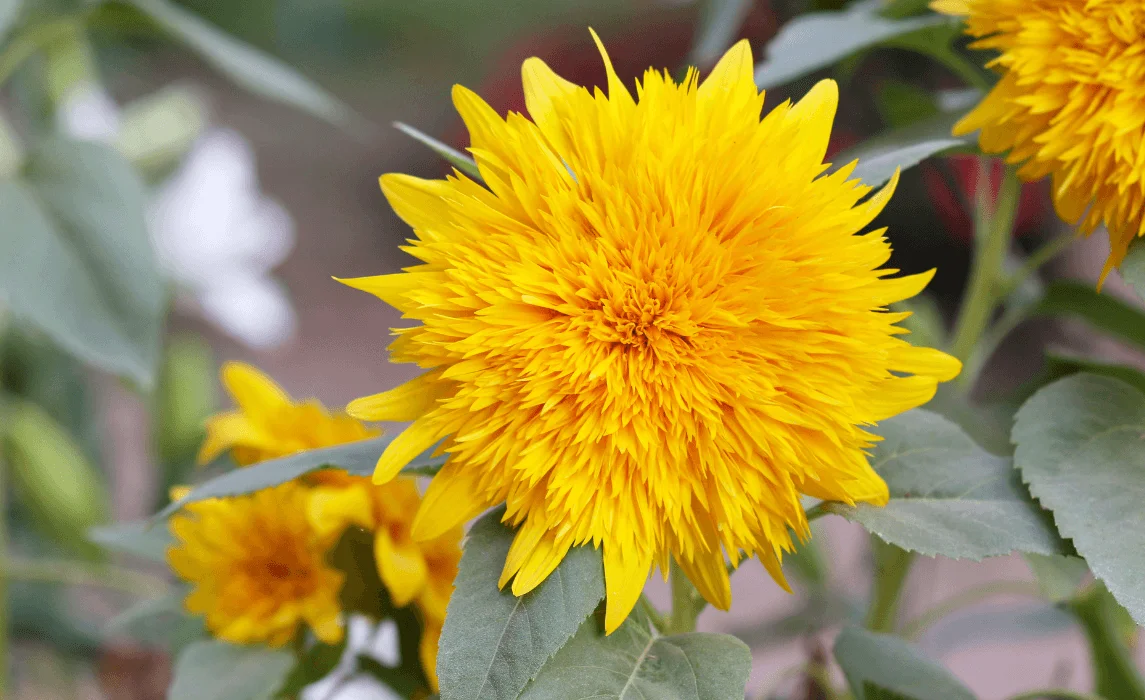
Compact and easy to manage, dwarf sunflowers like Sunspot and Teddy Bear grow just 1–3 feet tall, making them perfect for containers, borders, or small gardens. Despite their size, they produce bold blooms, Sunspot with large golden flowers and Teddy Bear with fluffy pom-pom-like petals. These sturdy plants resist wind damage and don’t need staking, thriving in well-draining soil with lots of sunlight. Dwarf sunflowers are ideal for gardeners who want cheerful blooms in limited spaces.
Multi-branching Sunflowers (e.g., Autumn Beauty, Lemon Queen)
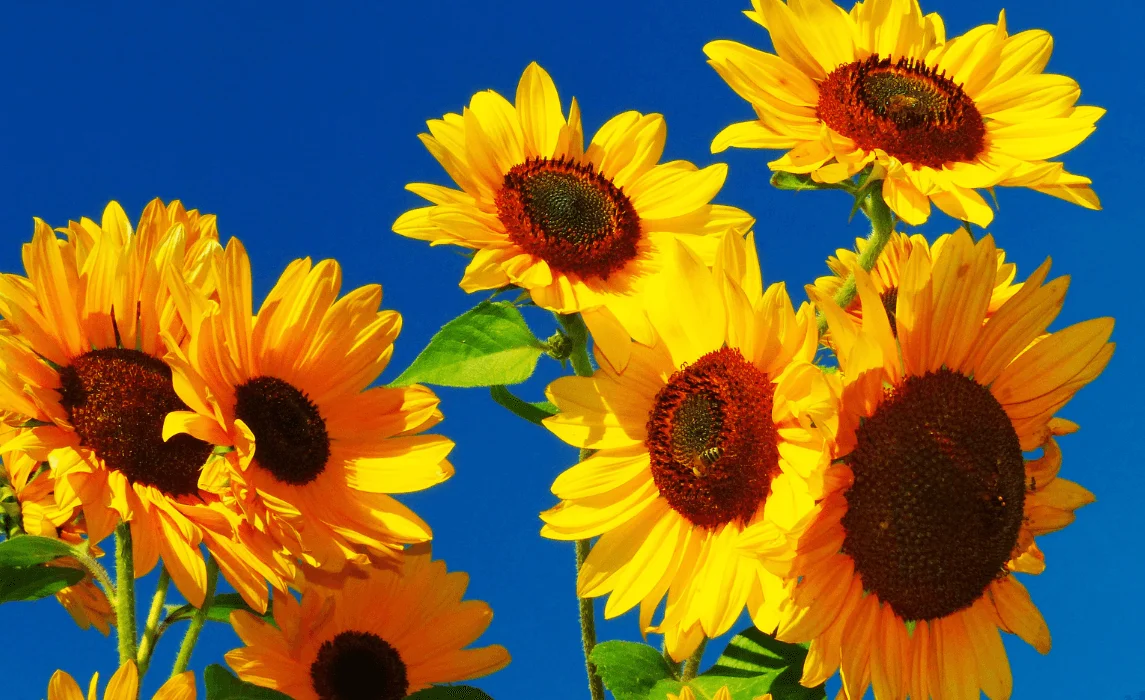
Multi-branching sunflowers reach 5–8 feet tall and produce many medium-sized blooms instead of one giant head, ensuring longer flowering. Varieties like Autumn Beauty bring warm shades of yellow, orange, and burgundy, while Lemon Queen adds soft yellow blooms that attract pollinators. These sunflowers are excellent for cut flowers and continuous garden color. Give them space to branch fully and deadhead spent blooms to encourage new ones. If you want vibrant, pollinator-friendly plants with lots of flowers, this type is the best choice.
Step-by-Step: How to Plant Sunflowers
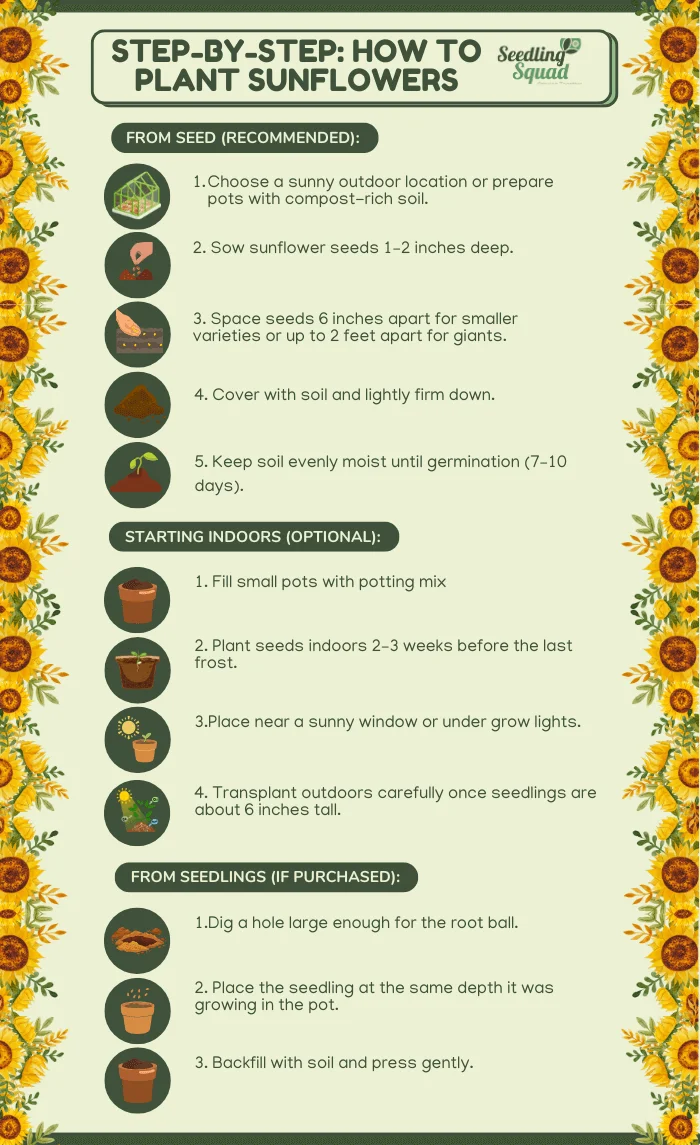
From Seed (Recommended):
- Choose a sunny outdoor location or prepare pots with compost-rich soil.
- Sow sunflower seeds 1–2 inches deep.
- Space seeds 6 inches apart for smaller varieties or up to 2 feet apart for giants.
- Cover with soil and lightly firm down.
- Keep soil evenly moist until germination (7–10 days).
Starting Indoors (Optional):
- Fill small pots with potting mix.
- Plant seeds indoors 2–3 weeks before the last frost.
- Place near a sunny window or under grow lights.
- Transplant outdoors carefully once seedlings are about 6 inches tall.
From Seedlings (if purchased):
- Dig a hole large enough for the root ball.
- Place the seedling at the same depth it was growing in the pot.
- Backfill with soil and press gently.
Requirements for Growing Sunflowers
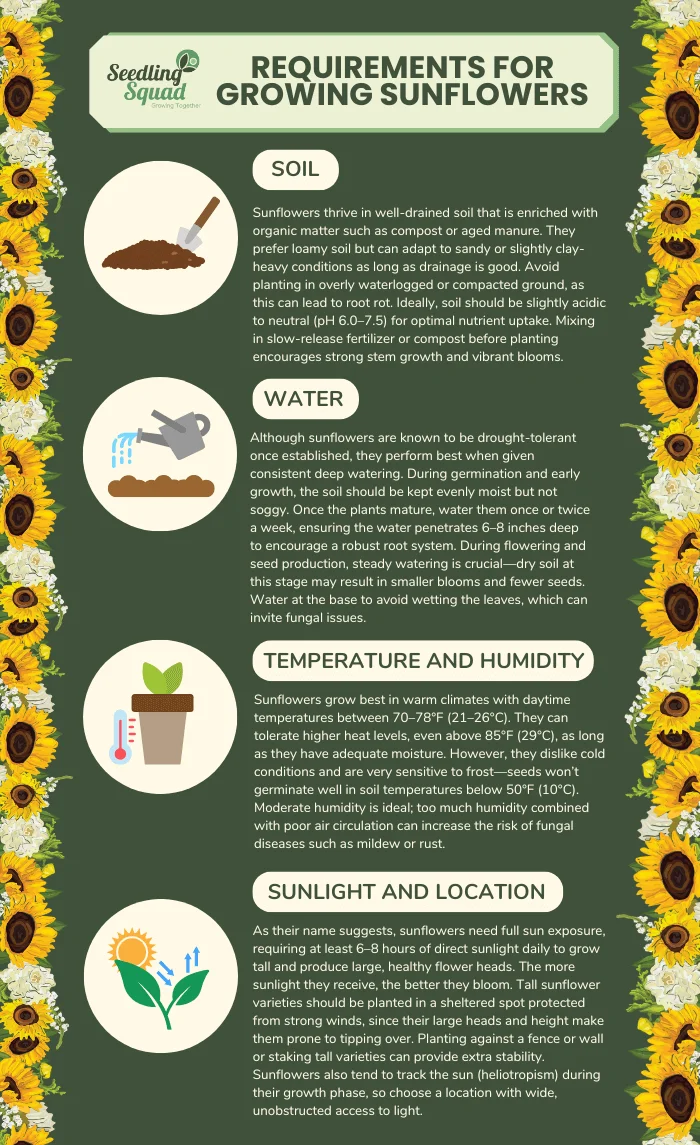
Soil
Sunflowers thrive in well-drained soil that is enriched with organic matter such as compost or aged manure. They prefer loamy soil but can adapt to sandy or slightly clay-heavy conditions as long as drainage is good. Avoid planting in overly waterlogged or compacted ground, as this can lead to root rot. Ideally, soil should be slightly acidic to neutral (pH 6.0-7.5) for optimal nutrient uptake. Mixing in slow-release fertilizer or compost before planting encourages strong stem growth and vibrant blooms.
Water
Although sunflowers are known to be drought-tolerant once established, they perform best when given consistent deep watering. During germination and early growth, the soil should be kept evenly moist but not soggy. Once the plants mature, water them once or twice a week, ensuring the water penetrates 6–8 inches deep to encourage a robust root system. During flowering and seed production, steady watering is crucial: dry soil at this stage may result in smaller blooms and fewer seeds. Water at the base to avoid wetting the leaves, which can invite fungal issues.
Temperature & Humidity
Sunflowers grow best in warm climates with daytime temperatures between 70-78°F (21-26°C). They can tolerate higher heat levels, even above 85°F (29°C), as long as they have adequate moisture. However, they dislike cold conditions and are very sensitive to frost. Seeds won’t germinate well in soil temperatures below 50°F (10°C). Moderate humidity is ideal; too much humidity combined with poor air circulation can increase the risk of fungal diseases such as mildew or rust.
Sunlight & Location
As their name suggests, sunflowers need full sun exposure, requiring at least 6-8 hours of direct sunlight daily to grow tall and produce large, healthy flower heads. The more sunlight they receive, the better they bloom. Tall sunflower varieties should be planted in a sheltered spot protected from strong winds, since their large heads and height make them prone to tipping over. Planting against a fence or wall or staking tall varieties can provide extra stability. Sunflowers also tend to track the sun (heliotropism) during their growth phase, so choose a location with wide, unobstructed access to light.
Maintenance Tips for Growing Sunflowers:

Fertilizer
Sunflowers are heavy feeders and thrive when given the right nutrients at the right time. Start with a balanced, slow-release fertilizer such as 10-10-10 (NPK) during early growth to promote sturdy stems and lush green leaves. Apply it once the seedlings are about 6 inches tall, and repeat every 3–4 weeks if needed. As the plants approach the budding stage, switch to a phosphorus-rich fertilizer (like 5-10-10 or 4-8-4). Phosphorus encourages stronger root systems and larger, more vibrant blooms. Be careful not to over-apply nitrogen, as too much will result in tall, leafy plants with fewer flowers. Always water the soil after fertilizing to help nutrients absorb efficiently.
Pruning
Pruning methods depend on the type of sunflower you’re growing. For single-stem giant sunflowers, pinch off side shoots or “suckers” when the plant is young so that it channels all of its energy into producing one massive flower head. For branching sunflower varieties, regularly remove spent blooms (deadheading) to encourage the plant to keep producing new flowers rather than going to seed. This not only extends the blooming season but also keeps the plant looking tidy. Additionally, remove any damaged, yellowing, or diseased leaves to improve air circulation, reduce pest issues, and direct the plant’s energy toward healthy growth.
Mulching
Mulching is essential for maintaining healthy sunflower beds. Apply a 2-3 inch layer of organic mulch such as shredded bark, straw, grass clippings, or compost around the base of the plants once they’re about 6–8 inches tall. Mulch helps the soil retain moisture, regulates soil temperature during hot summer days, and prevents weeds from competing with your sunflowers for nutrients. Be sure to keep mulch 2-3 inches away from the main stem to prevent excess moisture from causing stem rot. As the mulch breaks down, it enriches the soil, giving your sunflowers an extra nutrient boost.
Potting and Repotting
If you’re growing dwarf sunflowers in containers, select pots that are at least 12-16 inches deep and wide, as these varieties still need enough room for their strong taproots. Use a high-quality, well-draining potting mix enriched with compost or organic matter. Ensure that your pot has drainage holes to prevent waterlogging. Check the root system every few weeks. If you see roots circling the bottom or poking out of drainage holes, it’s time to repot. Move the plant into a larger container and refresh the soil with new potting mix to encourage continued growth. For taller potted sunflowers, add stakes or a small trellis for support as the stems grow heavier.
Overwintering
Sunflowers are annual plants, meaning they complete their life cycle within a single growing season. They germinate, grow, flower, and produce seeds all in the same year before dying back. Since they don’t survive winter, the best way to preserve your crop is by harvesting seeds. Wait until the back of the flower head turns brown and the seeds are plump with black-and-white stripes (for most varieties). Cut the heads and allow them to dry completely in a cool, dry area before storing seeds in an airtight container. The seeds can be roasted for snacks, saved for planting next year, or shared with birds. Once harvesting is complete, remove the spent stalks and compost them to recycle nutrients back into your garden soil.
Common Pests and Diseases
Common Pests
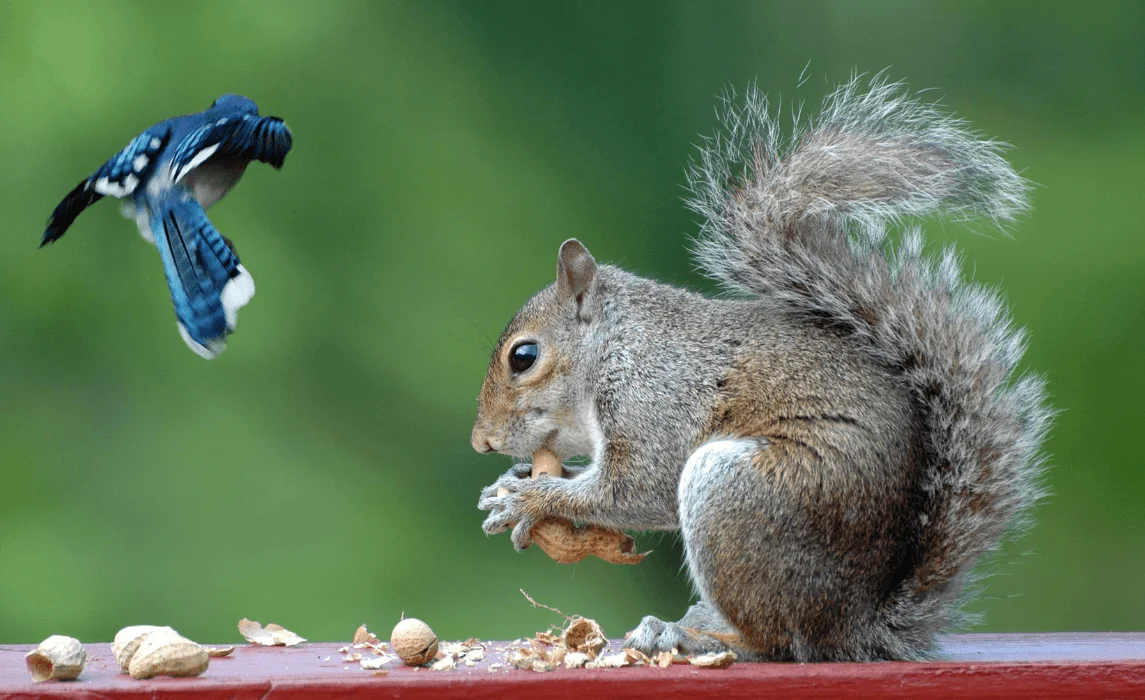
Birds and Squirrels
These animals are attracted to sunflower seeds, often damaging developing seed heads before they fully ripen. To protect your plants, cover the heads with mesh bags, bird netting, or lightweight row covers. Harvesting seeds promptly once mature also reduces losses.
Aphids
Tiny sap-sucking insects that cluster on stems, leaves, and buds, causing curling or yellowing foliage. They can also spread plant viruses. Control them by spraying with insecticidal soap, applying neem oil, or simply hosing them off with a strong stream of water. Introducing beneficial insects like ladybugs also helps keep aphid populations in check.
Caterpillars and Beetles
Both can chew through leaves and flower petals, weakening the plant and reducing its overall beauty and vigor. The sunflower moth caterpillar, in particular, tunnels into seed heads. Hand-pick them when numbers are low, or use organic sprays such as Bacillus thuringiensis (Bt) for caterpillars. For beetles, floating row covers early in the season may help prevent infestations.
Common Diseases
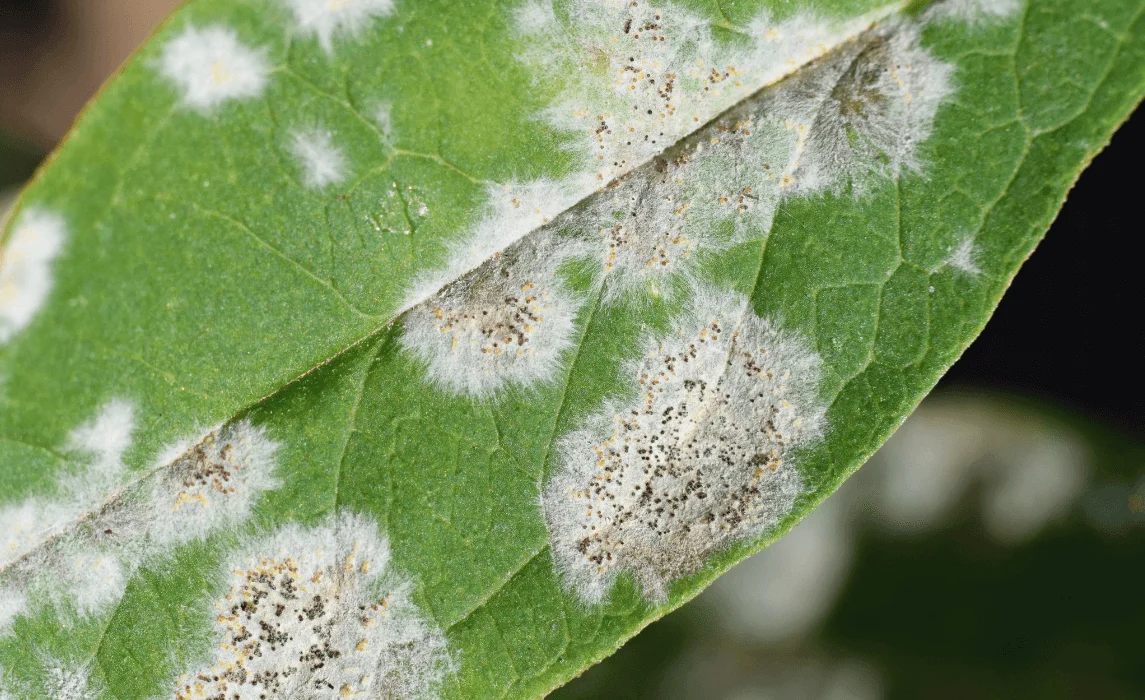
Powdery Mildew
This fungal disease appears as a white, powdery coating on leaves, especially in warm, dry conditions with poor air circulation. It weakens plants by reducing photosynthesis. Prevent it by spacing plants properly, ensuring good airflow, and watering at the base rather than overhead. Treat severe cases with sulfur-based fungicides or other general garden fungicides labeled for powdery mildew.
Downy Mildew / Rust
Downy mildew shows as yellow patches on leaves with gray, fuzzy mold on the undersides, while rust appears as reddish-brown pustules on foliage. Both spread rapidly in damp, humid conditions. Remove and destroy affected leaves promptly to slow disease spread. Avoid overhead watering, water early in the day to allow leaves to dry, and rotate crops each season. In persistent cases, copper-based fungicides can provide some control.
Harvesting Sunflower Seeds
Harvesting sunflower seeds is best done when the back of the flower head turns from yellow to brown, and the seeds appear plump, firm, and mature. To harvest, cut the head off the plant, leaving about 12 inches of stem attached, and hang it upside down in a dry, airy place. Once the head has dried, rub it to remove the seeds. These seeds can be roasted for eating, saved for replanting, or pressed into sunflower oil. Alternatively, you can leave the seed heads outdoors to serve as natural bird feeders.
Frequently Asked Questions:
Q: How long does it take for sunflowers to bloom?
It depends on the sunflower varieties you choose. When you’re growing sunflowers from seed, most sunflower plants take 70–100 days from the time you sow the seed until sunflower heads bloom. Smaller varieties are usually fast growing and bloom earlier, while a giant sunflower takes longer.
Q: What are the best sunflowers to grow?
There are many types of sunflowers. The traditional giant sunflower can reach 12–15 feet tall, producing large seed heads packed with edible seeds. Small sunflower varieties are ideal for pots or borders. For continuous color, try succession planting with branching varieties. When deciding on sunflowers to grow, consider if you want cut flowers, acres of sunflowers, or seeds for roasting.
Q: How do I plant sunflower seeds?
To plant sunflower seeds, choose a sunny spot or use seeds in pots. Outdoors, sow sunflower seeds 6 inches apart for smaller plants or several inches apart for giants. Indoors, you can plant seeds indoors in pots and later transplant them along a fence or in beds. The best planting time is after the frost has passed.





